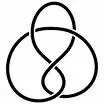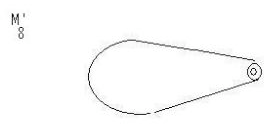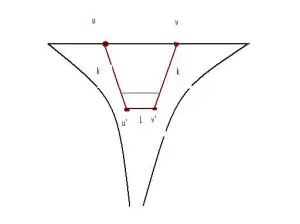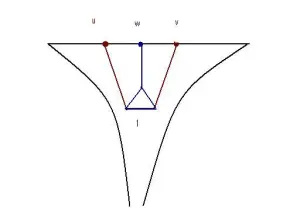Last time: Theorem 21 (Groves–Manning–Osin): If is hyperbolic rel
then there exists a finite subset
such that if
then
(a) is injective;
(b) is hyperbolic rel
.
Theorem 22 (Gromov, Olshanshkii, Delzant): If is hyperbolic relative to the infinite cyclic
then there is a
such that for all
there exists a
hyperbolic such that
for each
.
The proof is an easy application of Groves–Manning–Osin.
Definition: If (infinite cyclic) is malnormal then we say
are independent. A group G is omnipotent if for every independent
there exists a
such that for all
there exists a homomorphism $\phi$ from
to a finite group such that
for all
.
Omnipotence strengthens residual finiteness for torsionfree groups.
Exercise 29: If every hyperbolic group is residually finite then every hyperbolic group is omnipotent.
We’ll finish off by talking about a similar theorem of Agol–Groves–Manning. I’m going to seem a little cavalier about torsion. This is OK. In fact, if every hyperbolic group is residually finite then every hyperbolic group is virtually torsionfree.
Theorem 22 (Agol–Groves–Manning): If every hyperbolic group is residually finite then every quasi-convex subgroup of any hyperbolic group
is separable.
Let . The idea is to Dehn fill
to get a new hyperbolic group
in which the image
is finite and
. If we could do this, we would be done by residual finiteness. This works if
is malnormal. But it probably isn’t. Fortunately, we can quantify how far
is from being malnormal:
Definition: The height of is the maximal
such that there are distinct cosets
such that the intersection
is infinite.
H is height iff
is finite. In a torsionfree group,
is height
iff
is malnormal.
Theorem 23 (Gitik, Mitra, Rips, Sageev): A quasiconvex subgroup of a hyperbolic group has finite height.
Agol, Groves and Manning are able to prove:
Theorem 24: Let be a (torsionfree) residually finite hyperbolic group, and
a quasiconvex subgroup of height
. Let
. Then is an epimorphism
to a hyperbolic group such that
(i) is quasiconvex in
;
(ii) ;
(iii) has height
.
The idea of the proof of Theorem 24 is to Dehn fill a finite index subgroup of a maximal infinite intersection of conjugates of . Theorem 22 is an easy consequence.









Recent Comments